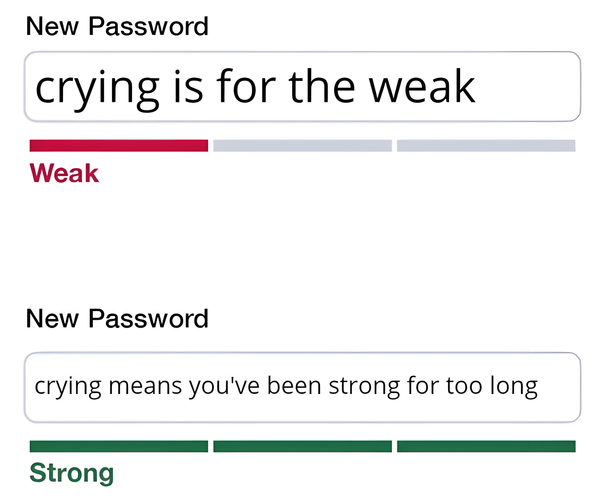The Managers' Guide #94

Relax. Nothing’s missing. - Maxime Lagacé
PwC’s 2024 Workforce Radar Report
- 🔄 Transformation Urgency — Business leaders must act now to transform their workforce, as 45% of CEOs believe their organizations won't be viable in 10 years on their current path.
- 🧲 Talent Magnet vs. Factory Balance — Organizations need to strategically position themselves on the spectrum between attracting external talent (magnet) and developing internal talent (factory) based on business needs.
- 📍 Location Strategy — Companies must develop intentional location strategies balancing employee flexibility, collaboration needs, and tax efficiency, as return-to-office mandates haven't worked effectively.
- 🤖 AI Integration — GenAI is fundamentally changing work, but organizations must first ensure their foundational technology infrastructure is solid before implementing AI solutions for maximum ROI.
- 💰 Workforce Balance Sheet — Leaders need a comprehensive view of all workforce costs beyond HR expenses to make strategic investments and identify opportunities for savings.
- 👥 Leadership Development — Transformative leaders who can drive change are essential, with only about half of CEOs saying their company tolerates small-scale failures or encourages innovation.
- 🔍 Trust Gap — While 86% of executives believe employee trust is high, only 67% of employees report high trust in their employer — a concerning disconnect that needs addressing.
- 📊 Gender & Generation Gaps — Only 52% of women consider their organization a “talent factory” compared to 73% of men, with similar disparities across age groups.
- 🌐 Flexible Work — Hybrid workers demonstrate the highest engagement (74%) and sense of belonging (76%) compared to fully remote or fully in-office employees.
- 🔑 Five Key Actions — Organizations should: empower talent strategy aligned with business goals, articulate a clear location strategy, ensure technology ROI, analyze total workforce costs, and invest in developing transformative leaders.
What finesse looks like when reading people and situations
- Reading people and situations requires “finesse” — a nuanced skill that helps you navigate complex social dynamics while maintaining relationships.
- 💬 Delivering bad news effectively means considering how the recipient will receive it — “when people are too 'blunt,' it's often because they weren't the person responsible for the outcome.”
- 🏛️ Understanding power dynamics is crucial — like not asking someone more powerful to use your Calendly when you're the one asking for a favor.
- 🤐 Knowing when to call someone out — or more importantly, when not to — is part of “picking your battles” and asking “What's my goal here?”
- 🎯 Intentions matter less than impact — “I will take into account your intentions, but I am very much still going to judge your execution.”
- 🧠 Recognizing the “question behind the question” helps you address underlying concerns rather than just surface-level inquiries.
- 🤝 Seeking win-win solutions that benefit both parties creates sustainable relationships — “If you only think of what's good for you, it's short-sighted.”
- 📚 Common advice like “Just ask! The worst they can say is no” isn't always accurate — the worst outcome might be damaging trust or relationships.
Managing Irritating People
- Everyone is messy and has flaws — irritating people are everywhere because “everyone is messy. Some more than others.”
- 💪 Shift focus to strengths rather than weaknesses — “We hire people for their strengths and evaluate them for their weaknesses.”
- 🔄 Practice the “3-strengths project” — record and discuss the top three strengths of everyone on your team to create positive momentum.
- 🛑 If people can't meet basic job requirements, take appropriate action — “Train them. Reassign them. Adjust their job description. Or manage them out.”
- 🧘 Stop obsessing over things you can't control — “if you can't fire someone, don't waste energy wishing you could. Focus on things you control.”
- 🎯 Channel energy toward potential instead of flaws — “Support aspirations. Don't focus on flaws.”
- 🤝 Use one-on-one meetings to explore how team members can apply their strengths to organizational goals.
- 💡 Remember that “wishing for things you can't do leads to helplessness. Living in your power makes life better.”
Research-Based Advice for the Seasonally Overwhelmed and Schedule Challenged
- Stop multitasking — “Human beings are singularly badly equipped to multitask” and the “start-stop-restart cycles are inefficient.”
- 🧠 Make time for “deep work” — designate distraction-free periods for important tasks that require concentration, both at work and at home.
- 📊 Use the Eisenhower framework — distinguish tasks by their importance (high to low) and urgency (pressing to deferrable).
- 🗓️ Consider September as your “fiscal year” start — clear the “clutter” in schedules at summer's end and “start a fresh year as the New England air turns crisp.”
- 🚫 Practice “zero-based budgeting” for your time — “start with a clean slate and intentionally select activities” rather than using the previous year as the default.
- ⚠️ Leave room for life to happen — “say 'no' to enough things to ensure we have slack in the system” as “planned downtime is cheaper than unplanned downtime.”
- 👫 Align expectations with your partner about household responsibilities — especially regarding “cognitive labor” (the planning and organizing required to run a home).
- 🗣️ Communicate explicitly about household tasks — men often resent “having to guess” about expectations, while women resent partners who act like “an assistant waiting for direction.”
- 🙏 Increase gratitude in relationships by developing “greater attunement” to your partner's circumstances and explicitly delegating tasks.
Carrots, sticks, and making things worse
- Every organization faces inherent limitations — “scarcity of resources, people, attention, or funding, friction from scaling, inertia from previous code bases.”
- ⚠️ Goal conflicts are inevitable — situations “where two important attributes clash with each other” like the classic “cheap, fast, and good; pick two.”
- 🧠 Hindsight bias distorts our judgment — we “overestimate how predictable outcomes were after the fact” and this affects how we evaluate decisions.
- 🥕 Adding incentives (positive or negative) often backfires — it “does not clarify the situation. It does not address goal conflicts. It adds more variables to the equation.”
- 💼 People respond to incentives in unexpected ways — “they'll change what they report later in subtle ways” by “tweaking or hiding information to protect themselves.”
- 🚨 During crises, priorities are already high-stakes — concerns like “keeping the business alive” or “preventing harm to users” naturally outrank thoughts about “bonuses” or “gift cards.”
- 🔍 Abstract targets can actively impede progress — metrics like “lowering incident counts” can “interfere with incident response by creating new decision points.”
- 📝 Better approaches focus on clarifying priorities — “creating cues and language for patterns” and “agreeing on strategies that support effective coordination.”
- 🧩 Understanding the real challenges requires honest feedback — like employees admitting “we get yelled at more for delivering features late than broken code so we just shipped broken code.”
The State of Global Compensation 2024 Report
- US compensation has rebounded significantly — “Median US compensation levels dipped a year ago, but they have now not only bounced back but surpassed levels from 18 months ago,” especially pronounced for engineering and data roles.
- 🌎 Canada, US, and UK consistently lead compensation globally — these three countries top the salary charts across all job types, with Canada reaching $128K median for engineering/data roles.
- 📊 Regional pay patterns show significant disparities — there's a steep drop-off between top-paying countries and others, with nations like Colombia, India, and Argentina showing median salaries of $36K or less for engineering roles.
- ⚖️ Gender pay gap varies by role and country — “In India and Great Britain for technical roles, the pay gap is relatively narrow,” while “in the US, there is gender pay parity in our data for marketing and sales roles.”
- 🚺 Female representation is increasing — particularly in product and design roles where representation has grown substantially in the US (from 20% to 41% from Q1 2023 to Q2 2024).
- 💸 Employment type varies significantly by region — Full-time employment is most common in developed markets (Germany 84%, UK 77%, Canada 63%) while independent contractor status dominates in Argentina (100%) and Colombia (96%).
- 📈 Inflation-adjusted earnings show mixed global picture — Workers in countries like Sweden (+5.6%), Spain (+3.4%), and Italy (+2.3%) enjoy real wage growth while those in Poland (-3.7%), Colombia (-3.1%) and Brazil (-1.8%) experience net decreases.
- 💼 Equity compensation adds significant value for technical roles — Software engineers receive 75-150% of their salary in equity grants, which typically vest over a 4-year period.
That’s all for this week’s edition
I hope you liked it, and you’ve learned something — if you did, don’t forget to give a thumbs-up and share this issue with your friends and network.
See y’all next week 👋



